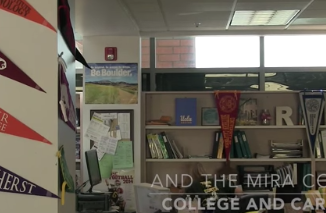By Parnia Mazhar
Staff Writer
According to rankings from the publishing and education firm Pearson, the United States is ranked eight spots below the United Kingdom, which is ranked sixth in terms of the top education systems in the world, demonstrating that the United States needs to reassess its education structure in order to make it more practical for successful learning.
A UK student’s educational path differs from a U.S. student’s in that after the age of 16, UK students complete secondary school equivalent to the U.S. grades six to 10, and then attend a UK version of college, a program known as Sixth Form, equivalent to U.S. grades 11 and 12, or stop attending school entirely.
UK universities offer students vocational training and apprenticeships for two years. Generally, students stop their apprenticeships at age 18 and then begin their selected occupation, such as carpentry or plumbing. This is more practical for the teenagers who have no interest in pursuing higher education, as it allows them to start focusing on their careers and earning an income at age 16, two years sooner than the average U.S. student.
According to the International Student Exchange Program handbook, students in Sixth Form solely study courses that are associated with the subject they will focus on at university. This helps students become more proficient in their desired field before joining the work force.
Once these students pass their advanced-level exams at age 18, they attend three to four years of undergraduate school. With a system such as the UK’s, students receive two extra years of extensive training in their desired field, resulting in precision and consistency in their career.
In the United States, post-high school education is mostly liberal arts-based, meaning it incorporates all subject areas. Liberal arts schools offer students who don’t know exactly which career they want to pursue the opportunity to explore a variety of areas. This can breed a more multidimensional way of thinking than simply focusing on one subject, but may distract others who already know their main focus.
While students who are unsure of their future major should continue to pursue a liberal arts education in the U.S., students who are confident in their major should investigate the possibility of attending UK schools until the U.S. provides a way to accommodate both types of students.
According to the Times Higher Education World University Rankings 2013-14, Harvard University in the U.S. and Oxford University in the UK, both private colleges, are ranked the number one and two best universities in the world. The tuition for Harvard is $43,938 per year, whereas in Oxford the tuition is £9,000, or $14,621, per year. The contrast in the costs proves that students have a better chance of affording college in the UK. By attending UK schools, students are receiving the same caliber education for a much cheaper price.
Institutions in the UK cannot charge a student more than £9,000 per year for undergraduate degrees. Because completely altering the U.S.’s tuition structure would be difficult, especially because the countries have a different economic structure, U.S. institutions should adopt similar regulations or provide a reasonable alternative to help jump start students’ careers.
In order to make a more practical and efficient education system for students, it is crucial for the United States to learn from the United Kingdom and modify their basic school structure, including adopting logical tuition fees and course expectations.



Leave a Reply